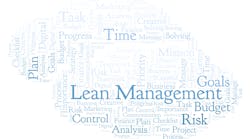Have you heard of the “lean” concept in the business world? It’s one of those terms that probably gets thrown around a bit too casually these days, like “game changer.” But it is a serious management philosophy that has transformed industries over the last several decades and now people are trying to figure out how it can help dentistry evolve.
The practice of lean dates back to Toyota Motor Corporation in the 1950s. Here’s the gist: companies should focus on ways to reduce waste and improve productivity. It’s a simple philosophy but often difficult to put into practice. We have to discover places where we’re being wasteful with resources such as materials, time, and money, and then figure out how to reduce that waste without compromising the quality of the product.
While a dental practice is quite different from an automobile manufacturing line, dentists can start to think of the ways we’re wasteful and inefficient in delivering our care. Poor scheduling of appointments, large inventories of products (some of which can expire), expensive office equipment that is unnecessary, having to get up several times during a procedure because we don’t have what we need—all of these things are wasteful of resources. Without question these inefficiencies can also affect our bottom lines’ profitability.
If you’re interested in creating a leaner dental practice, we’re going to be tackling this topic in detail at the Profit Summit this June in Las Vegas. The Dental Economics Principles of Practice Management Conference has a special focus this year; the Profit Summit will help you tackle overhead, improve clinical efficiency, battle PPOs for the fees you deserve, and get you disciplined with your cash. I hope to see you there.
Cheers,
Chris
RECENT ARTICLES BY DR. CHRIS SALIERNO
Checking in on SmileDirectClub’s IPO: It’s still not pretty
Data-driven Dentistry: A series on mobile tech, big data, and oral health






